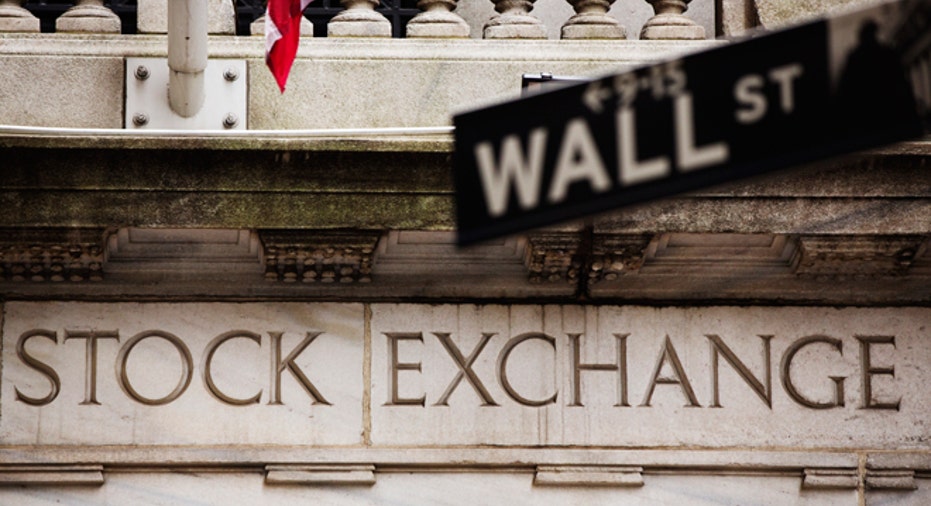Is it Finally Time to Crank up the Volume on Wall Street?

As market volatility vanishes and retail investors express lingering skepticism, equity trading volume on Wall Street remains barely above hushed tones.
Volume, which is closely monitored by savvy market participants as a sign of conviction, has contracted in 36 of the past 39 months and is down another 15% from the same period in 2012.
Despite the muted volume, traders and struggling exchange operators might want to brace for louder trading activities ahead as the global economy continues to recover, luring investors who may be forced to hop off the fence.
“I think it will be a long time before we see volumes like we saw in ‘08 and ’09 -- and maybe never again. But markets don’t stay placid forever,” said Dan McMahon, head of institutional equity trading at Raymond James Financial (NYSE:RJF). “I do think volumes will rebound off these cyclical lows in the short to medium term.”
If the markets enjoy an uptick on the volume front, it could validate the recent rally that has lifted U.S. markets to uncharted territory and also help fuel another leg of the four-year-old bull market. Then again, a surge in volume could also be generated by a negative event that scares away cautious investors.
Not Enough Energy?
Market watchers pay close attention to volume, favoring the old adage that “volume confirms price.” Disciples of volume analytics believe trading activity should increase when the price moves in the direction of the trend and decrease when the price moves the opposite direction.
Buff Dormeier, founder of VolumeAnalysis.com, likened rising volume with the need for pilots to throttle up energy as they increase a plane’s trajectory.
The anemic trading volume since the financial crisis helps explain why some investors remain dubious of the S&P 500’s 150% surge since March 2009.
“We have not had enough volume, or energy, to support that rise,” said Dormeier, author of Investing With Volume Analysis. “You either need more people to come in to support this move or the price will contract.”
According to S&P Capital IQ, average annual volume is off 14.7% from the year-earlier period.
Structural Changes Stunt Volume Growth
Haunted by the scariest financial crisis since the Great Depression, volumes declined for 27 consecutive months until April 2012, the longest stretch on record, Capital IQ said. After turning positive between May 2012 and July 2012, volumes have since contracted in each of the past 11 months.
Traditionally, average annual volume tends to rise, increasing in 77% of all months since 1951, Capital IQ said.
In addition to the crisis scars, the drop in volume has been driven by structural changes to the financial system, especially the routing of more trades to dark pools by relatively new high-frequency traders.
Equity volume has also been influenced by the rise of exchange-traded funds, which have become increasingly popular among retail investors looking to gain exposure to broad swaths of the markets rather than individual stocks.
“It’s hard to tell what a normalized level of volume should be given how different the market structure is and volatility has been,” said Nicholas Colas, chief market strategist at ConvergEx.
Rising VIX Could Signal Volume Bounce
While investors shouldn’t expect volume to return to the ’07 levels any time soon, seasonal factors could support volume growth in the coming months.
Historically, July is the worst volume month for Wall Street since 1950, making up an average of just 7.5% of total annual volume, while August is tied for the second-worst at 8.2%, Capital IQ said.
"Individuals and corporations will eventually feel the need to put their money to work.”
But September through December are typically the strongest months, highlighted by an average of 9.7% of total annual volume during December. In bull markets that December figure climbs to 9.9%, while November stands at 8.7%.
“I believe that current volume levels will not likely become the norm,” Sam Stovall, chief investment strategist at Capital IQ wrote in a recent note to clients. “I believe the watch phrase for the future of S&P 500 trading volume is: Prepare for an upturn.”
McMahon said he “wholeheartedly” agrees with that assessment, saying volume will likely rebound as volatility increases and the markets find direction.
After spiking to nearly 22 on June 24 amid concerns about the end of monetary stimulus, the VIX volatility index has plummeted as much as 46% to 11.83 this week -- the lowest level for the so-called "fear gauge" since April 2007.
“Nobody is looking to jump in with both feet. Nobody is looking to lighten up for fear of missing what most expect to be a continued rally,” said McMahon. “People are sitting on the sidelines waiting for a pullback.”
Bullish or Bearish Catalyst?
One optimistic scenario where volumes could enjoy an uptick would be if the economic recovery accelerates, boosting equity valuations.
That situation would signal investors are “finally gaining confidence in the market and starting to use the market as their major instrument for wealth building,” said Dormeier.
Stovall said he believes as the recovery continues and earnings improve, “individuals and corporations will eventually feel the need to put their money to work.”
For early signals of this return of confidence, investors should pay close attention to equity flows data.
TrimTabs recently estimated that U.S. equity funds enjoyed a record inflow of $40.3 billion in July as investors rushed to reduce exposure to bonds. After a record $69.1 billion was yanked from bond funds in June, fixed income was hit by another $21.1 billion in outflows last month, TrimTabs said.
Of course, the bearish case for increased volume played out in the fall of ’08 and other times of stress.
Trading activity could increase if one of the concerns on investors’ worry list comes to fruition, such as a policy misstep by the Federal Reserve, a deepening slowdown in China or geopolitical conflict in the Middle East.



















